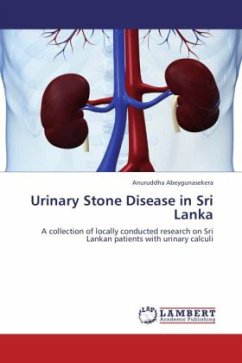
Urinary Tract Stone Disease

PAYBACK Punkte
57 °P sammeln!
Urinary stone disease constitutes more than a quarter of urologists' workload in the Western countries and is more than half in the Middle-East and Central Asian countries. The surgical management of stone disease has changed considerably in the last five years and our understanding of mechanism of stone disease has improved with some old concepts discarded and newer theories gaining ground.
Covering the entire spectrum of urinary stone disease and with contributions of more than fifty internationally recognised experts, this exhaustive and complex reference work will be invaluable to all urologists, nephrologists and non-medical scientists.
Covering the entire spectrum of urinary stone disease and with contributions of more than fifty internationally recognised experts, this exhaustive and complex reference work will be invaluable to all urologists, nephrologists and non-medical scientists.
Urinary Tract Stone Disease covers the entire subject of urinary stone disease from basic sciences to medical and surgical treatment of stones.The surgical management of urinary stone disease has advanced significantly since the introduction of shock wave lithotripsy (SWL), percutaneous nephrolithotomy (PCNL), ureteroscopy (URS), and more recently retrograde intra-renal surgery (RIRS) with small, flexible fibre-optic ureteroscopes. As a result, "cutting for stones" has become a rare procedure. These minimally invasive techniques are now also used in the paediatric population with great safety and success.This book consists of 60 chapters divided into nine sections. The first three sections are devoted to basic sciences on subjects ranging from epidemiology of urinary calculi, to shock wave physics. The fourth section deals with diagnostic, laboratory, and research methods in the diagnosis and investigation of stones. Stone disease in children is dealt with in chapter five, followed by three sections on surgical management of stones. Finally, there is an entire section on medical management of stones.With highly illustrated diagrams, photographs, and X-ray images throughout, this book is an excellent reference for urologists, nephrologists and non-medical scientists.












